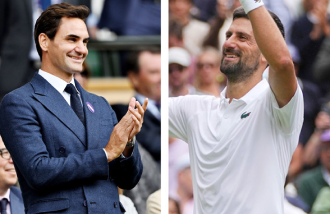[Editorial] Principled students' hairstyle liberalization
[Editorial] Principled students' hairstyle liberalization
Posted October. 05, 2000 20:59,
The heated debate both within and without of the educational community over middle and high school students' hairstyles has finally come to the conclusion of liberalizing the rules on their haircuts and hairdos as to respect students' wishes. The Ministry of Education's recent meeting on the issue of students' hairstyles decided that the issue should solely be decided by schools themselves after listening to all their school members including students.
Middle and high school students have strongly protested against the MOE's directives against the liberalization of rules governing secondary school students' hairstyles. They argued that the directives were infringements on their human rights. Internet sites and communications were flooded with the students' outcries criticizing the MOE's policy and their demands to liberalize the policy on their haircuts. Times have changed a lot and made our old ideas no longer relevant or meaningful as to dictate a change in the uniform hairstyles of our secondary school students.
The MOE's liberalization is a very belated step to take. The country's debate over the liberalization dates back many years and the public opinion by and large was in favor of the liberalization. But, the Ministry of Education has dilly-dallied up until now without making a decision on the issue. Only a few days ago, middle and high school students staged demonstrations in the heart of downtown Seoul to demand freedom of choice regarding their hairstyles. This hastened the MOE's decision for the liberalization of their hairdos.
Thus, the circumstances surrounding the MEO's decision cannot avoid giving the impression that it succumbed to the students' demands. If the MEO had the liberalization in mind for some time, it would have made the decision a long time ago. The case can be viewed as an incident reflecting the MOE's lack of firm stand and consistency.
The MOE's new policy does not of course mean 100 percent liberalization of the rules governing students' hairstyles. Because, the specifics and criteria for the hairstyle are still left to the final decision which is to be made by students, parents and school authorities after their joint consultations.
Yet, this does not entirely eliminate some of our worries over the students' new hair policy. No matter how desirable the liberalization is to meet a new trend of our time that respects a person's uniqueness, individuality and self-statement, we still think that unduly permissive statements of the freedom of hairstyles on the part of these young students can create a cause for some legitimate concern.
We can not eliminate the possibility that it may create a sense of disarray and confusion in our society. Hairstyles most sensitively reflect what is in vogue and crazes. Besides, their status is patently for young students. For this reason, the liberalization must not go beyond what is acceptable by the judgment of our sound common sense. The point here is, ``Who should decide the criteria as to satisfy requirements of our common sense, and how?''
Here, schools would probably like to exercise initiatives. But, it may be desirable for the students to decide the criteria this time because the real import of the liberalization is to make students responsible for what they do. What the students decided first as just criteria may be discussed afterward by other members of the school to make the criteria final. Exercise of freedom must always be accompanied by responsibility. Students must learn how to responsibly exercise the rights given to them as well as the virtues of self-restraint in exercising those privileges.



![[단독]김건희 논문 검증단 “이진숙, 제자 업적 가로채…지명철회 요구할것”](https://dimg.donga.com/c/138/175/90/1/wps/NEWS/IMAGE/2025/07/09/131969512.2.jpg)
![[속보]尹 구속심사 6시간 40분만에 종료…서울구치소서 결과 기다려](https://dimg.donga.com/c/138/175/90/1/wps/NEWS/IMAGE/2025/07/09/131972678.1.jpg)

![[단독]김영훈 “文정부때 최저임금 인상-정규직 전환에 사회 갈등”](https://dimg.donga.com/c/138/175/90/1/wps/NEWS/IMAGE/2025/07/09/131970720.1.jpg)
